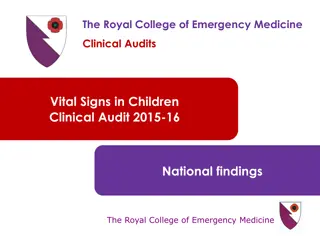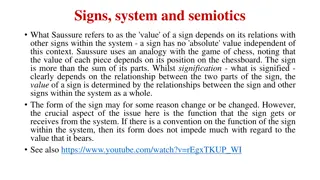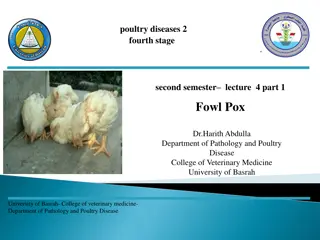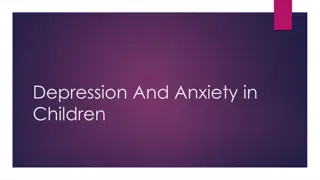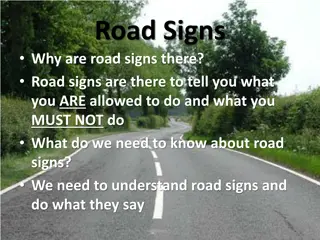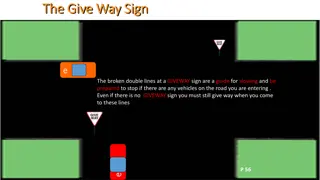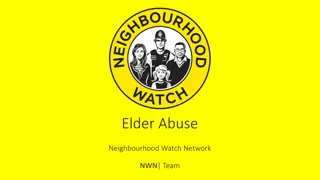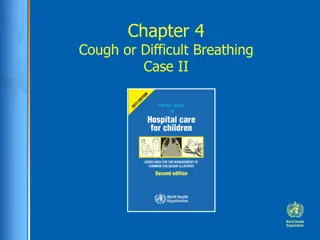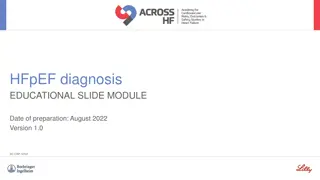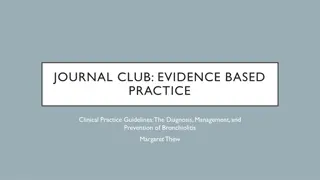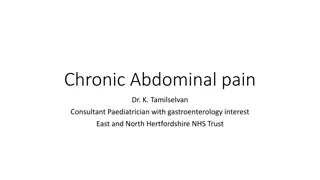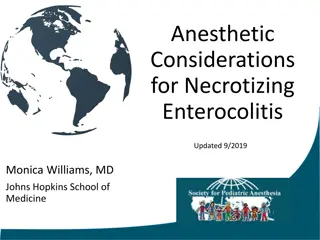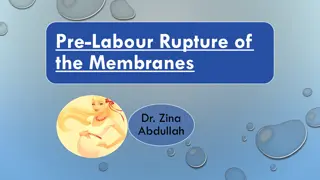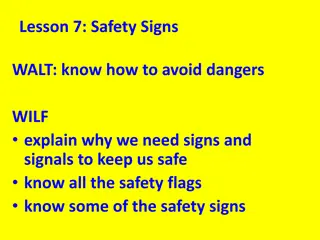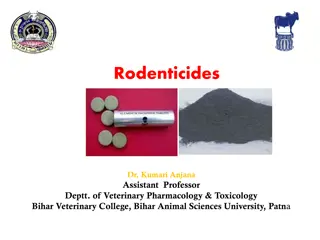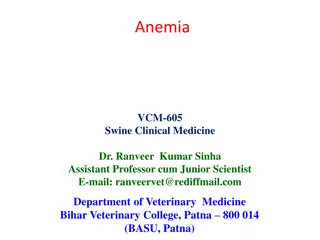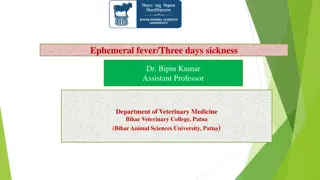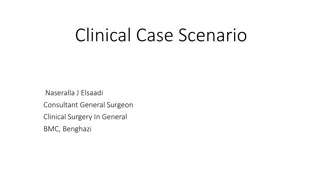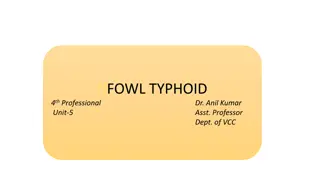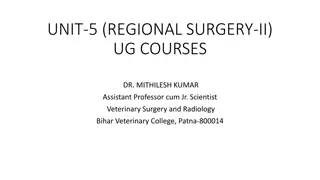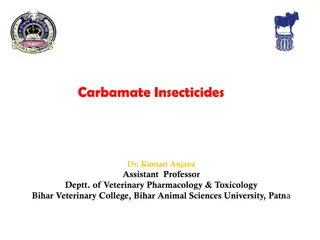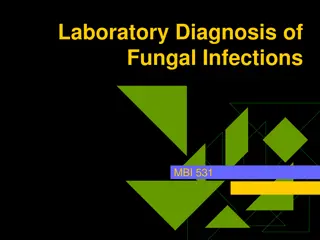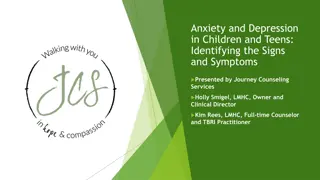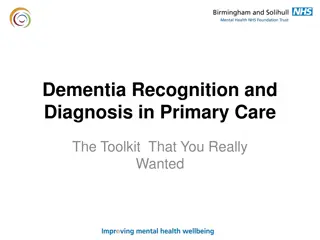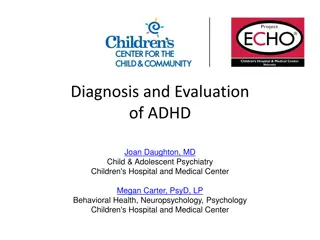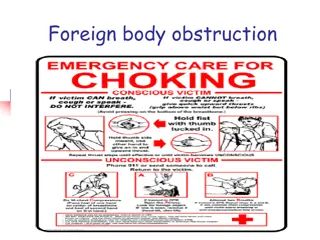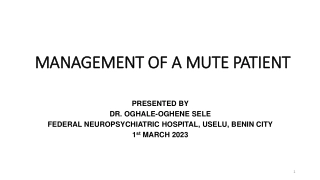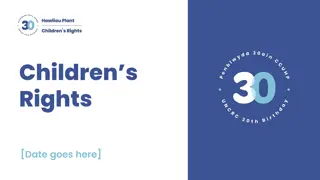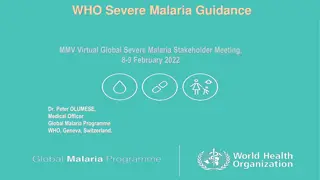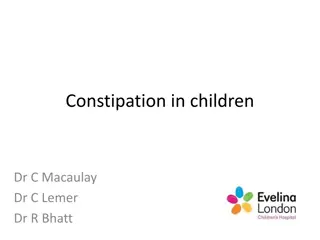TB Management in Children: Diagnosis and Signs
This session covers essential aspects of diagnosing and managing Tuberculosis (TB) in children. Participants will learn about the signs and symptoms of TB, diagnostic methods, management strategies, and the importance of accurate reporting. Key topics include history of exposure, clinical presentation, TB diagnosis algorithms, and indications for evaluating children as TB suspects. Additionally, the session highlights danger signs that require urgent referral for children with TB.
Download Presentation

Please find below an Image/Link to download the presentation.
The content on the website is provided AS IS for your information and personal use only. It may not be sold, licensed, or shared on other websites without obtaining consent from the author. Download presentation by click this link. If you encounter any issues during the download, it is possible that the publisher has removed the file from their server.
E N D
Presentation Transcript
Basic HIV Course for Health Professionals Session 10b: TB Management: Children
Learning Objectives By the end of this session participants should be able to: Describe the signs and symptom of TB in children Demonstrate effective clinical application of algorithms for TB diagnosis in children Explain the management of TB in children Demonstrate accurate recording and reporting, using correct tools
Diagnosing TB in Children TB diagnosis in children based on combination of; history of exposure clinical presentation TST test and chest x-ray
Signs and Symptoms of TB Disease in Children (1) History of exposure, especially to a close family member Most common symptoms are: Chronic cough = cough >14 days, not improving Fever of greater > 38 degrees C every day for 14 days, after excluding common causes Documented weight loss / Failure to thrive Unusual fatigue in child - not playing or very tired
Signs and Symptoms of TB Disease in Children (2) Signs suggestive of TB disease: Fever > 38 degrees C every day for 2 weeks, after excluding common causes Painless enlarged lymph nodes (usually in neck) Night sweats Breathlessness Peripheral Oedema Painful limbs and joints
Danger Signs of TB in Children Requiring Urgent Referral Headache, irritability, drowsiness, neck stiffness and convulsions Meningitis not responding to treatment Big liver and spleen Distended abdomen with ascites Breathlessness and peripheral oedema Severe wheezing not responding to bronchodilators Acute onset of bending of the spine
Indications for the Evaluation of Children as TB Suspects Exposure to smear or culture positive case of PTB Indication of TB infection TST 10mm or more in HIV-negative or 5mm or more in HIV positive children Symptoms suggestive of TB Screen HIV positive children for TB exposure and symptoms at each clinical visit
REGARD AS TB CASE IF THE FOLLOWING EXIST There are symptoms of TB (e.g. increased temperature for 3 weeks, progressive weight loss on the road to health chart) AND An abnormal chest x-ray suggestive of TB SCENARIO History of exposure to infectious TB case WITH Confirmed infection (positive TST) History of exposure to infectious TB case OR Confirmed infection (positive TST) AND An abnormal chest x-ray suggestive of TB The diagnosis can be confirmed by collecting a gastric aspirate or sputum for Xpert/smear and culture. Symptoms of TB Symptoms of TB AND History of exposure to infectious TB case OR Confirmed infection (positive TST) No Chest X-ray available
Note: Whenever possible encourage child to produce sputum for diagnostic confirmation. Preferred method via gastric aspirate or induction. Xpert can be used on gastric/lymph node aspirate, pleural fluid, cerebrospinal fluid, or biopsies
Contact Screening (1) Screen all children in close contact with an infectious case of TB to exclude TB disease Screening should include: thorough history clinical exam Children with symptoms require TST test and chest x-ray, if available, to aid diagnosis
Contact Screening (2) Rapidly identify and screen close child contacts of MDR-TB cases Also, ideally, refer to expert MDR centre in Province for evaluation Asymptomatic contacts should receive 6-monthly (HIV negative) or 3-monthly (HIV-positive) clinical follow-up for at least two years If active MDR-TB develops, promptly initiate regimen of treatment designed to treat MDR-TB
Diagnosing TB in HIV-infected Children (1) Signs and symptoms of TB and those of other HIV related lung diseases could look the same TST skin test is frequently negative even though child may have TB Radiological features of TB are usually similar to those in HIV-negative children, but picture could be atypical
Diagnosing TB in HIV-infected Children (2) Differential diagnosis of pulmonary TB in HIV- infected children includes: bacterial pneumonia viral pneumonia fungal lung disease pneumocystis jiroveci pneumonia pulmonary lymphoma Kaposi s sarcoma If there is uncertainty of TB diagnosis, treat child with antibiotics for 5-7 days and repeat chest x-ray after two weeks depending on clinical picture
Algorithm for Screening a Child with Documented TB Exposure Refer to page 156 of your participant manual to see the algorithm
Infants Exposed to TB Disease (1) Congenital TB is rare! Baby should not receive BCG at birth If baby is symptomatic: Refer to hospital for evaluation to exclude TB If baby has TB, give baby full course of TB treatment (regimen 3) Start TB treatment in a referral centre to ensure correct dosages
Infants Exposed to TB Disease (2) If baby is asymptomatic: Baby needs preventive therapy (isoniazid 10 mg/kg/day) for 6 months Baby should not initially receive BCG vaccination since IPT or TB treatment will kill vaccine If baby continues to be asymptomatic, administer BCG after completion of preventive treatment unless child is HIV infected or has symptoms suggestive of HIV
How to Treat Neonates of Mothers with TB
Next Steps for a Child Diagnosed with TB Exclude HIV infection Refer HIV-infected children for HIV/ART services Counsel mother about importance of a balanced diet and healthy eating Consider referral for nutritional support Documentation: Complete TB Register Make a note in Road to Health Booklet (RtHB) Record weight at each monthly visit in RtHB Ask about other children or adults in household, screen them for TB
HIV Testing in Childhood TB Suspects (1) HIV test - important to diagnose childhood TB In children < 18 months: Screen for HIV with HIV DNA PCR test Confirm HIV with Viral Load (HIV RNA) test In children > 18 months Use HIV ELISA or HIV rapid test to screen and confirm diagnosis
HIV Testing in Childhood TB Suspects (2) Diagnosis of TB in HIV-infected children is the same as for HIV-uninfected children except there is greater uncertainty because: TB symptoms can be confused with HIV symptoms Chest x-ray is more difficult to interpret
INH Prophylaxis in Children (1) Where TB contact has been identified and once active TB disease has been excluded, these children should receive 6 months of INH preventive therapy (IPT): All children under 5 (including neonates) All HIV-infected children, irrespective of age
INH Prophylaxis in Children (2) Pre-exposure IPT is not recommended for any child irrespective of HIV status Repeat IPT with each new exposure to infectious TB, as previous IPT or TB treatment does not protect against future TB If re-exposure to infectious TB case occurs while on IPT, continue IPT as long as source case remains infectious
INH Prophylaxis in Children (3) Exclude active TB prior to IPT if any of these signs/symptoms exist, investigate for TB and do NOT start IPT: Cough or wheeze > 2 weeks, not improving on treatment Persistent fever of > 2 weeks Documented weight loss/ failure to thrive Fatigue (less playful/ always tired) If any of the above is present, investigate for TB
IPT and children Screen all children for TB at every visit. This should include: Asking about TB contacts Contact with a TB infected person within the last 12 months Asking about TB symptoms Cough / fever / loss of weight / night sweats If positive TB contact and no active disease then offer IPT for 6 months In all children <5 years In all HIV-positive children up to 15 years Dose 10mg/kg of INH with pyridoxine for 6 months Repeat with every TB exposure
Recommended IPT Dosage for Children Refer to page 159 of your participant manual to see the IPT dosage chart
Tips on IPT for Children If unable to swallow tablet or fraction of tablet, advise caregivers to crush medicine and dissolve it in water or multi-vitamin syrup before giving it to child If HIV-infected or malnourished, provide pyridoxine daily for 6 months: If < 5 years of age: 12.5mg daily If > 5 years of age: 25mg daily
TB Meningitis Before effective anti-TB chemotherapy, TB meningitis was uniformly fatal TB meningitis remains potentially devastating, associated with high morbidity and mortality HIV positive clients - increased risk for developing TB meningitis but clinical features and outcomes similar to that in HIV-negative clients
TB Meningitis: Clinical Presentation and Management (1) Gradual onset of headache, malaise, confusion, decreased consciousness and sometimes vomiting Examination reveals neck stiffness and a positive Kernig's sign
TB Meningitis: Clinical Presentation and Management (2) Diagnosis rests on clinical presentation & lumbar puncture exam of cerebrospinal fluid (CSF) Refer clients with suspected TB meningitis to hospital without delay TB meningitis is life threatening, with serious complications if not treated promptly Clients with severe neurological impairment such as drowsiness or coma are at greater risk of neurological sequelae and higher mortality
CSF Differential Diagnosis for TB Meningitis Refer to page 164 of your participant manual to see the CSF Differential Diagnosis chart
Disseminated / Miliary TB Results from widespread blood borne dissemination of TB bacilli Consequence of: a recent primary infection or erosion of a TB lesion into a blood vessel Occurs most often in children and young adults Highly fatal
When disseminated TB is suspected, treatment should be commenced immediately without waiting for bacteriological proof of diagnosis.
Disseminated TB: Clinical Features (1) General deterioration in health and symptoms such as: high fever night sweats weight loss shortness of breath Clinical signs may reflect involvement of other organs: pleural effusion digestive problems Hepatosplenomegaly meningeal signs
Disseminated TB: Diagnosis Chest X-ray Full blood count Liver function tests which may be abnormal Bacteriological confirmation sometimes possible from sputum, CSF, or bone marrow Xpert/smear microscopy of sputum may be negative, as disease is paucibacillary
Tuberculous Lymphadenopathy Caused by lymphatic spread of organism Very common form of extra-pulmonary TB Involvement of lymph nodes is usually a complication of primary TB More common in children Tends to be found in later stages of HIV
Tuberculous Lymphadenopathy: Clinical Features (1) Large mediastinal lymph nodes can compress airways leading to an audible wheeze or typical brassy cough Peripheral TB lymphadenopathy most commonly occurs in neck and armpits Typically, lymph nodes are large (>2 cm), tender, non- symmetrical, matted, firm to fluctuant and rapidly growing Associated systemic features include: fever, night sweats and weight loss
Tuberculous Lymphadenopathy: Clinical Features (2) As nodes increase in size and become fluctuant, may suppurate and drain via a chronic fistula, resulting ultimately in scarring Differentiate TB lymphadenopathy from persistent generalized lymphadenopathy (PGL) TB infected lymph nodes decrease very slowly in size (over weeks or months) on treatment in a few cases, still same size after treatment Does not mean was not successful
Tuberculous Lymphadenopathy: Diagnosis If lymph node is exuding caseous material through a fistula, send to lab for microscopy Otherwise, refer client for a needle aspirate of lymph node Refer to page 166 of your participant manual to see the Diagnostic Algorithm for TB Lymphadenitis
Tuberculous Serous Effusions May occur in any serous cavity of the body, i.e. pleural, pericardial or peritoneal cavities Common form of TB in HIV positive clients with systemic and local features TB culture of no immediate help because culture result takes six weeks or more
Tuberculous Pleural Effusion Most common cause of a unilateral pleural effusion in countries with a high TB burden Also most common form of HIV-related extra- pulmonary disease mortality of about 20% in first 2 months on treatment Management of TB pleural effusion start TB treatment promptly and determining HIV- status of client
TB Pleural Effusion: Clinical Features (1) Acute presentation: non-productive cough chest pain shortness of breath high temperature Chronic form found predominantly in elderly Presents with: Weakness Anorexia weight loss slight fever cough chest pain
TB Pleural Effusion: Clinical Features (2) Clinical examination shows: Tracheal and mediastinal shift away from the side of the effusion Decreased chest movement Stony dullness on percussion on side of effusion
TB Pleural Effusion: Diagnosis Confirm suspected pleural effusions by immediate chest x- ray This will show unilateral, uniform white opacity, often with a concave upper border Refer for pleural aspiration wherever possible Xpert may be requested on pleural fluid or pleural biopsies If aspiration is not possible, TB treatment will be started unless chest x-ray suggests a different diagnosis
Tuberculous Pericardial Effusion Tuberculosis accounts for about: 90% of pericardial effusions in HIV positive clients 50% of those who are HIV-negative
TB Pericardial Effusion: Clinical Features (1) Cardiovascular symptoms include: chest pain shortness of breath cough dizziness weakness due to low cardiac output. Symptoms of right-sided heart failure include: leg swelling right hypochondrial pain (liver congestion) abdominal swelling (ascites)
TB Pericardial Effusion: Clinical Features (2) Signs include: Tachycardia low blood pressure pulsus paradoxus raised jugular venous pressure impalpable apex beat distant heart sounds a pericardial friction rub Signs of right-sided heart failure include: hepatosplenomegaly ascites peripheral oedema
TB Pericardial Effusion: Diagnosis Usually rests on suggestive systemic features and ultrasound where available. Refer client with signs of pericardial effusion for diagnostic testing. Chest X-ray may show a large globular heart, clear lung fields and bilateral pleural effusions ECG may show tachycardia, flattening of ST and T waves, low voltage QRS complexes TB is most likely cause and treatment is the same for all types of TB
Peritoneal Tuberculosis Most common type of abdominal TB


